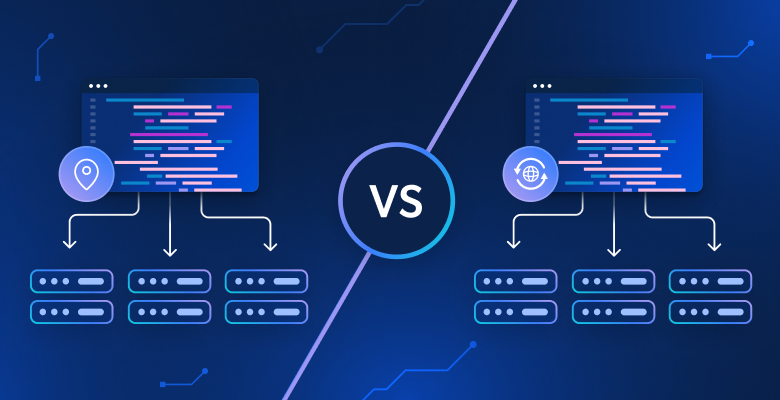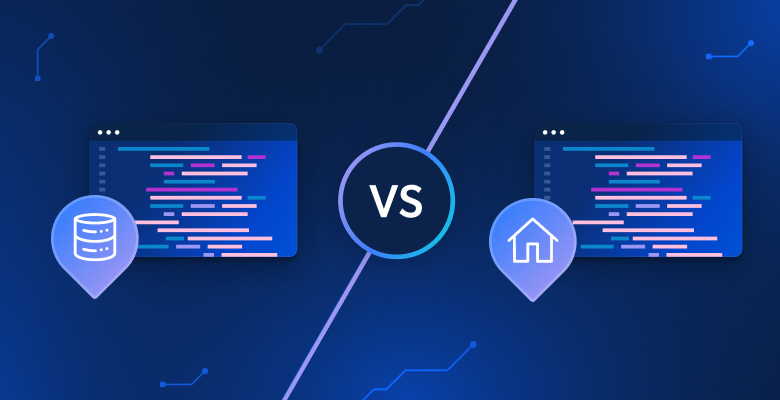In this article, we will discuss:
- What is a Proxy?
- Why are Proxies Needed?
- What is a Static Proxy?
- What is a Rotating Proxy?
- Static and Rotating Proxies Comparison
- Static vs. Rotating Proxies Use Cases
What is a Proxy?
A proxy server acts as an intermediary between a client who requests a web page and the server that provides it. Proxies provide anonymity, which can defeat the restrictions many websites put in place to prevent their sites from being scraped.
Why are Proxies Needed?
Many businesses are interested in gathering large amounts of web data to support their Ad Verification, Price Monitoring, Social Media Monitoring, Reputation Management, or Data Scraping needs.
Unfortunately, many websites place restrictions on what types of data can be harvested from their sites. Almost all websites have a robots.txt file that describes the rules the website owner wants web crawlers to follow.
Many sites enforce restrictions on web crawlers. These include geographic restrictions (the site is only visible to visitors in specific geographic areas) and volume requests (100 requests in 5 minutes). When this type of activity is detected, websites can put up blocking technologies like CAPTCHAs or just refuse to load pages.
Proxies can help bypass these restrictions by routing traffic through IP addresses that appear to be legitimate web visitors.
What is a Static Proxy?
The IP address of a static proxy does not change over time. Static proxies are groups of IP addresses that data centers and ISPs sell or lease.
Static proxies offer a number of advantages. Since there is only one ‘hop’ between the requestor and the target website they perform faster. One of the biggest advantages is the option to keep the IP “for life” – it will be yours as long as you need it.
Static proxies also have some disadvantages. Depending on your requirements, the supply of static IP addresses might not cover all of the geographic needs for your data scraping. Some shopping websites, like Amazon, block static IP addresses that send too many requests.
What is a Rotating Proxy?
Rotating proxies give you a new IP address if the IP you are using isn’t available anymore or if you configured an automated IP rotation in your proxy manager. The IP addresses can rotate based on a predefined period of time (seconds/minutes), after a certain number of requests, or as soon as the used IP isn’t available anymore. The proxy management system manages when and how new IP addresses are assigned to you. Rotating proxies pull the addresses from a pool of residential or mobile IP addresses. People choose to connect their devices to the network in exchange for a free or ad-free app.
Rotating proxies offer a number of advantages over static proxies. First, rotating proxies use IP addresses from millions of homes and mobile devices. This enables geographic targeting down to the city/state level. Second, the combination of IP rotation plus legitimate IPs from residential/mobile devices makes rotating IPs very hard to detect.
There are three main disadvantages to rotating proxies. Rotating proxies are slower than static proxies. There is an extra ‘hop’ in the process with the need for a gateway proxy server to assign a new IP address. The pool of IP addresses (residences/mobile devices) usually has lower bandwidth than data center or ISP proxies. Finally, rotating proxies are usually more expensive since the proxy supplier has to source and maintain millions of IP addresses.
Static and Rotating Proxies Comparison
| Static Proxies | Rotating Proxies | |
| IP Addresses | Fixed. IP addresses are purchased or leased from data centers or ISPs | Variable. A new IP address is assigned if configured that way. |
| Best for | Companies targeting less-complex websites that can benefit from a faster pool of static IPs. Included use cases: account management and ad verification. | Companies targeting sophisticated websites that can benefit from IP rotation |
| Block Risk | Detectable | Harder to detect |
Static vs. Rotating Proxies Use Cases
Static and rotating proxies use cases vary significantly. The common use cases include:
Static Proxy Use Cases
- Ad Verification. Being able to view ads as a user from specific countries/states/cities enables marketers to ensure that the right messaging and imagery are being served to the correct audience and leading to the right landing page.
- Network Penetration Attack Testing. ISO 27001 certifications require a network penetration test. Static proxies can facilitate the volume, speed, and anonymity required for good penetration tests.
- Social media account management. Manage multiple Facebook, Instagram, and other social media accounts from different geolocations. Can be integrated with the best antidetect browsers.
- Reputation Management. Static proxies are good for collecting data about your company’s image on the web. This can include items like positive and negative customer reviews, press mentions, and social media mentions.
Rotating Proxy Use Cases
- eCommerce competitive market analysis. Collect pricing information and product inventory data from your competitors.
- Business Intelligence. Scraping sensitive public data, like LinkedIn information, requires the anonymity and scale that rotating residential proxies can provide.
Conclusion
Both static and dynamic proxies have pros and cons. To know which one to use, you need to ask yourself the following questions: How complicated is the website I want to scrape? Do I need those IPs for the long-term? Do I need immediate access (as there is a KYC process for rotating proxies)?
Once you have determined which proxy type you need, fill out the form below to get a 7 day free trial and see how the proxies perform yourself.








